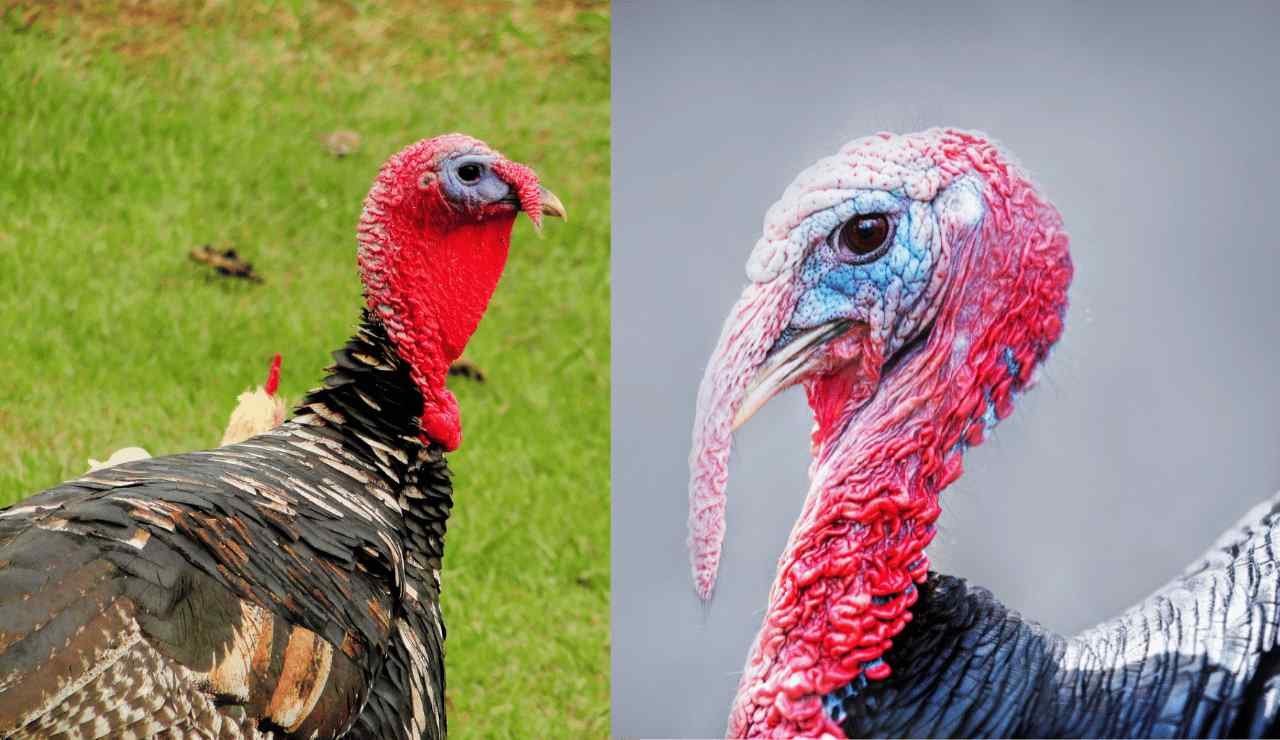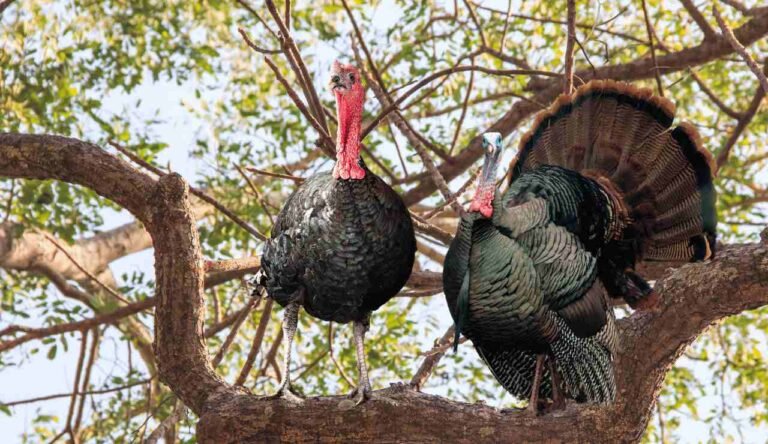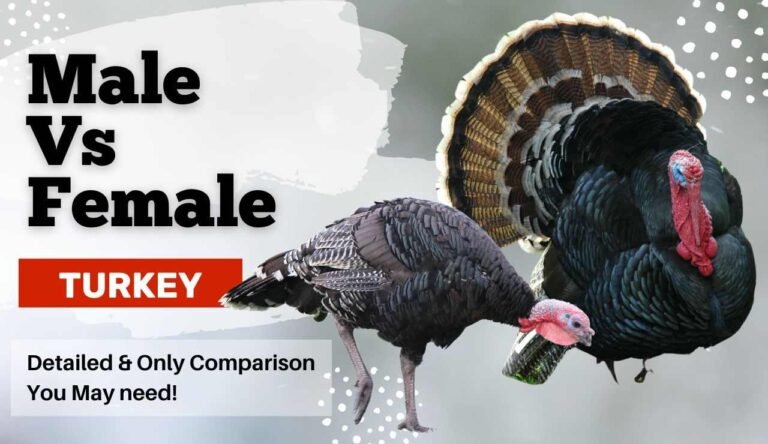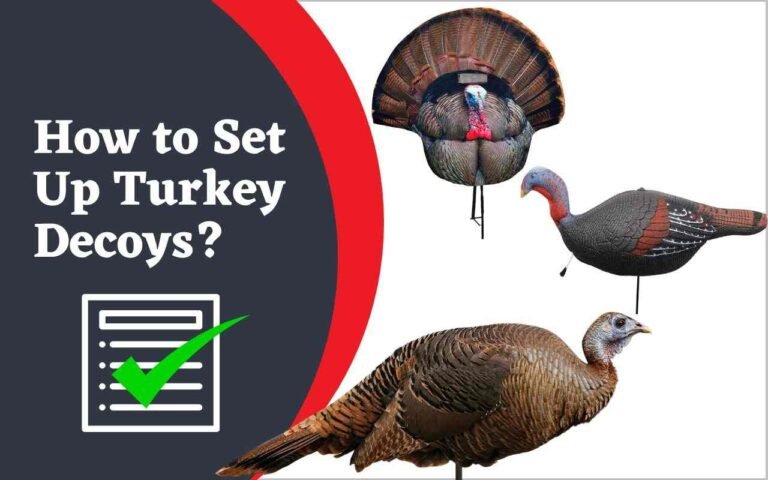Hen Vs Tom Turkey: Which One Is Better Choice? What You Need to Know?
Turkeys are a common poultry bird often eaten on holidays and other special occasions. Turkeys come in two varieties: hens and toms. Turkeys are either male or female; hens are the latter. For anyone intending to buy or raise these two species of turkeys, it is extremely important to understand the distinctions between them. This blog will discuss the Hen and Tom turkeys’ physical attributes, behavior, temperament, meat quality and nutritional value, breeding, and reproduction. By the conclusion of this article, you will have a better knowledge of the distinctions between these two kinds of turkeys and their significance in the turkey business.
Hen vs Tom turkey
| Characteristic | Tom Turkey | Hen Turkey |
|---|---|---|
| Size | 11-24 pounds | 5-12 pounds |
| Plumage Coloration | Bright and colorful | Less colorful |
| Head Color | Bright red, blue, and white | White or blue-gray |
| Breast Feathers | Metallic or iridescent | Rusty brown, white, or gray-tipped |
| Snood Size | Larger | Smaller |
| Wattle Size | Larger | Smaller |
| Label Designation | Tom | Hen |
| Tenderness (Note) | Equally Tender | Equally Tender |
What is a tom turkey?
One of the two genders of turkeys is the tom, an adult male. The female turkey, or hen, is the opposite gender. Toms typically weigh 18 to 32 pounds, making them heavier than hens. Their physical characteristics distinguish them from hens, including their bigger size and a beard on their breast. They are also referred to as gobblers. Toms have a unique gobble or sound that may be louder and last longer than the gobble of a Jake, a younger male turkey. Both hen and tom turkeys have a high proportion of white to black flesh and are equally soft and tasty. When buying or rearing turkeys, it’s crucial to understand the distinctions between hens and toms since their size and gender might affect things like weight, meat ratio, and breeding ability.
Physical Characteristics of Hen and Tom Turkeys
| Characteristic | Hen Turkey | Tom Turkey | Significance |
|---|---|---|---|
| Size | Smaller | Larger | Toms are usually larger and heavier than Hens |
| Head | Smaller, with a more slender neck | Larger, with a thicker neck | The size and shape of the head and neck can help identify the gender of the turkey |
| Snood | Shorter and less prominent | Longer and more prominent | The snood is the fleshy protuberance on the turkey's forehead, which is longer and more prominent in Tom turkeys |
| Caruncles | Smaller and less colorful | Larger and more colorful | Caruncles are the fleshy bumps on the turkey's head and neck, which are more prominent and colorful in Tom turkeys |
| Feathers | Duller and less colorful | Brighter and more colorful | Toms have more vibrant and colorful feathers than Hens |
| Wings | Shorter and less powerful | Longer and more powerful | Toms have longer and more powerful wings, which help them attract mates during breeding season |
Particularly when they are not exhibiting overtly gender-specific behaviours or noises, these physical traits may aid in differentiating between Hen and Tom turkeys. For breeders or farmers intending to buy or grow turkeys for certain reasons, being aware of these traits might be helpful.
Behavior and Temperament
| Behavior/Temperament | Hen Turkey | Tom Turkey | Significance |
|---|---|---|---|
| Vocalization | High-pitched and frequent clucking | Low-pitched gobbling | Hens are quieter and cluck more regularly whereas Toms are more vocal and will gobble to attract mates. |
| Aggression | Less aggressive | More aggressive | During mating season, toms may become more possessive and aggressive against other males. |
| Social Structure | More social and prefer to stay in groups | More solitary and will often roam alone | While toms are more solitary and frequently forage alone, hens prefer to stay in groups and interact with other birds. |
| Nesting Habits | Build nests on the ground and incubate their eggs | Do not participate in nesting or incubation | While toms don't engage in nesting or incubation, hens will construct ground nests and incubate their eggs for about 28 days. |
| Maternal Instincts | Protective of their young and will care for them after hatching | No maternal instincts | When their eggs hatch, hens will take care of them and protect them, but toms lack maternal instincts and do not help raise their young. |
When raising or breeding turkeys, it’s important to consider these behavioural and temperamental variations. If you want to raise turkeys for meat production, for instance, you may want to go for a friendlier and less aggressive breed, like a Hen turkey. To pick a breed of turkey that is more aggressive and territorial, like a Tom turkey, you may wish to breed them for their capacity to reproduce.
Meat Quality and Nutritional Value of Hen and Tom Turkeys
| Quality/Value | Hen Turkey | Tom Turkey |
|---|---|---|
| Meat Tenderness | Tend to have more tender meat | Tend to have tougher meat |
| Meat Flavor | Mild and slightly sweet | Rich and gamey |
| Breast Size | Smaller | Larger |
| Fat Content | Lower | Higher |
| Nutritional Value | Lower in calories and fat, higher in protein | Higher in calories and fat, lower in protein |
It’s crucial to comprehend the meat quality and nutritional worth of Hen and Tom turkeys before buying or raising one. For those who like a less gamey flavor, hen turkeys make a fantastic alternative since their flesh is often more delicate and mild. They are a better choice for people following their diet since they contain less fat and calories. On the other hand, Tom turkeys have a stronger flavor and greater breast sizes, making them preferable for those who want a more conventional turkey flavor. Their higher fat content, however, may affect how tender the meat is.
Breeding and Reproduction
| Aspect | Hen Turkey | Tom Turkey | Significance |
|---|---|---|---|
| Mating Behavior | Will mate with multiple Toms | Will mate with multiple Hens | Both Hens and Toms will mate with multiple partners during breeding season |
| Reproductive Lifespan | 2-3 years | 5-6 years | Toms have a longer reproductive lifespan than Hens |
| Egg Production | Produce 80-100 eggs per year | Do not lay eggs | Hens will lay eggs for about 6 months out of the year, while Toms do not lay eggs |
| Incubation | Will incubate eggs for about 28 days | Do not participate in incubation | Hens will incubate their eggs for about 28 days, while Toms do not participate in incubation |
| Broodiness | More likely to become broody and hatch eggs | Do not become broody | Hens are more likely to become broody and hatch their eggs, while Toms do not become broody |
When raising turkeys for meat or breeding, it’s crucial to comprehend the Hen and Tom breed’s reproductive behaviors. To breed additional turkeys, you should primarily breed hens since they lay the eggs and will incubate them. When you wish to grow turkeys naturally without using an incubator, they are also more likely to get broody and hatch their eggs. On the other side, during the breeding season, Toms will mate with a variety of Hens and have a longer reproductive life.
Conclusion
When buying or raising turkeys, it’s crucial to understand the differences between Hen and Tom turkeys in terms of their physical traits, temperament, and breeding and reproductive habits. Hen turkeys are better for those controlling their diets since they are leaner and have more delicate flesh. Toms are bigger, more colourful, and live longer as breeding adults. The kind of turkey chosen depends on the demands and objectives of the person, whether they are for meat, breeding, or showing.
Frequently Asked Questions: Hen Vs Tom Turkey
What is the difference between hens and tom turkeys?
Tom turkeys, which vary in weight from 11 to 24 pounds, are typically bigger than hen turkeys, which weigh between 5 and 12 pounds. Hens often have rusty brown, white, or grey-tipped breast feathers, whereas male turkeys typically have a head that is red, blue, and white with iridescent feathers. In comparison to female turkeys, males have larger wattles and snoods. While both toms and hens are equally tender, the sex designation of hen or tom turkey on the label is optional and only measures size.
Which is better, a hen or a tom turkey?
Personal taste will play a role here. Because they are typically smaller and have a higher meat-to-bone ratio, some people think hens are preferable. Some people think toms have better taste. What matters most, in the end, is your taste preferences.
How can you easily tell the difference between a hen and a tom turkey?
Turkey hens and toms may be distinguished from one another by size. Toms often weigh more than hens, have thicker bones, and less meat is palatable. The fleshy protuberance on a turkey’s beak, known as the snood, is likewise more pronounced in males than females. The label on a turkey you are buying can also say if it is a hen or a tom.
Are there any nutritional differences between hens and tom turkeys?
Given that both types of turkeys are excellent protein providers and have comparable quantities of vitamins and minerals, there are no discernible nutritional differences between hen and tom turkeys.
- Florida Turkey Season 2025-2026: Latest Hunting Dates, Licenses & Rules Available! - October 16, 2025
- Delaware Turkey Season 2025-2026: [Everything You Need to Know Dates, Regulations, Bags & More] - October 16, 2025
- Connecticut Turkey Season 2025-2026: [Dates, Regulations, Bag Limits & More] - October 16, 2025






